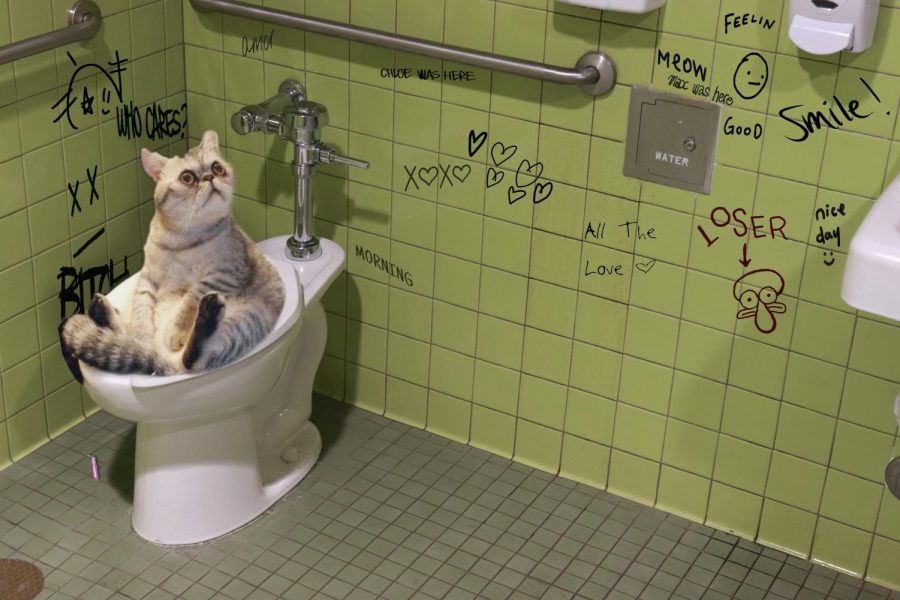Prevent Bathroom Emergencies: Don't Flush Cat Poop Down Your Toilet - Expert Guidance
Prevent Bathroom Emergencies: Don't Flush Cat Poop Down Your Toilet - Expert Guidance
Blog Article
The article following next involving Don’t flush cat feces down the toilet is truly entertaining. You should investigate for yourself.

Intro
As feline owners, it's vital to be mindful of just how we take care of our feline good friends' waste. While it may appear convenient to purge cat poop down the bathroom, this practice can have damaging consequences for both the atmosphere and human health.
Ecological Impact
Flushing pet cat poop introduces damaging virus and parasites right into the water supply, presenting a significant threat to aquatic environments. These pollutants can adversely influence aquatic life and concession water high quality.
Wellness Risks
Along with environmental worries, purging cat waste can likewise pose health dangers to human beings. Pet cat feces may include Toxoplasma gondii, a bloodsucker that can create toxoplasmosis-- a potentially severe health problem, specifically for expectant females and people with weakened body immune systems.
Alternatives to Flushing
Fortunately, there are safer and a lot more liable ways to take care of feline poop. Think about the following options:
1. Scoop and Dispose in Trash
One of the most common approach of getting rid of pet cat poop is to scoop it right into a biodegradable bag and toss it in the trash. Be sure to make use of a specialized litter inside story and dispose of the waste promptly.
2. Usage Biodegradable Litter
Opt for naturally degradable feline clutter made from products such as corn or wheat. These trashes are eco-friendly and can be safely gotten rid of in the garbage.
3. Bury in the Yard
If you have a backyard, take into consideration hiding pet cat waste in a marked location away from veggie gardens and water sources. Be sure to dig deep sufficient to stop contamination of groundwater.
4. Set Up a Pet Waste Disposal System
Invest in a family pet garbage disposal system specifically developed for feline waste. These systems make use of enzymes to break down the waste, lowering smell and environmental effect.
Final thought
Liable family pet possession extends past offering food and shelter-- it additionally includes appropriate waste monitoring. By refraining from flushing feline poop down the toilet and selecting alternative disposal techniques, we can reduce our environmental impact and safeguard human health.
Why You Should NEVER Flush Cat Poop (and/or Litter) Down Your Toilet
The Problem with Litter
The main function of litter is to solidify and adhere to your cat’s waste. While this makes litter excellent for collecting cat poop and urine, it’s also the exact property that makes it a nightmare when flushed down the toilet.
Cat litter can and will clog pipes. There is non-clumping litter, but it’s still quite heavy and can build up in pipes. This is true even of supposed “flushable litter.”
The problems only compound when the litter is already clumped into cat waste. Toilet paper is among the more flushable things, and even too much of that will clog a toilet.
The Problem with Cat Poop
Sewers and septic systems are designed with human waste in mind. The microbes that help break down human waste don’t work on cat waste. Additionally, cat poop plays host to the parasite Toxoplasma gondii.
When flushed, this parasite can enter the environment in places it was never meant to, posing a risk to pregnant women, their unborn children, and other people with compromised immune systems. While it might not seem possible, flushing cat poop can indeed introduce this parasite to the public water supply.
These reasons are why, even if you’ve trained your cat to go on the toilet and flush, which is possible, it’s still not a good idea. Also, pregnant women and the immunocompromised shouldn’t change litter, either.
How to Handle Litter
The best way to handle litter is to simply put it in a plastic bag and place it in the trash. Avoiding environmental risks and possible plumbing damage is worth the extra effort.
You can also invest in devices that seal away your cat’s waste in a separate compartment, so you don’t have to change the litter nearly as often. They’re also safer for pet owners because they limit the possibility of Toxoplasma gondii exposure.
Disposing of litter the old-fashioned way will ensure you won’t have to worry about any issues that flushing the waste can potentially cause.
Take Care of Clogged Pipes with Stephens Plumbing, Heating & Air Conditioning
The reasons you should never flush cat poop down your toilet are numerous, but sometimes the inevitable happens despite your best efforts.
Stephens Plumbing, Heating & Air Conditioning is ready to help if you’re experiencing litter-blocked plumbing. Whether you need us in an emergency or want to schedule regular maintenance, we’re here for you.
https://www.stephensplumbing.net/bathroom-plumbing/never-flush-cat-poop-down-your-toilet/

As a keen reader about How to Dispose of Cat Poop and Litter Without Plastic Bags, I assumed sharing that information was beneficial. Sharing is good. Helping people is fun. We recognize the value of reading our article about Don’t flush cat feces down the toilet.
Schedule Your Service Report this page